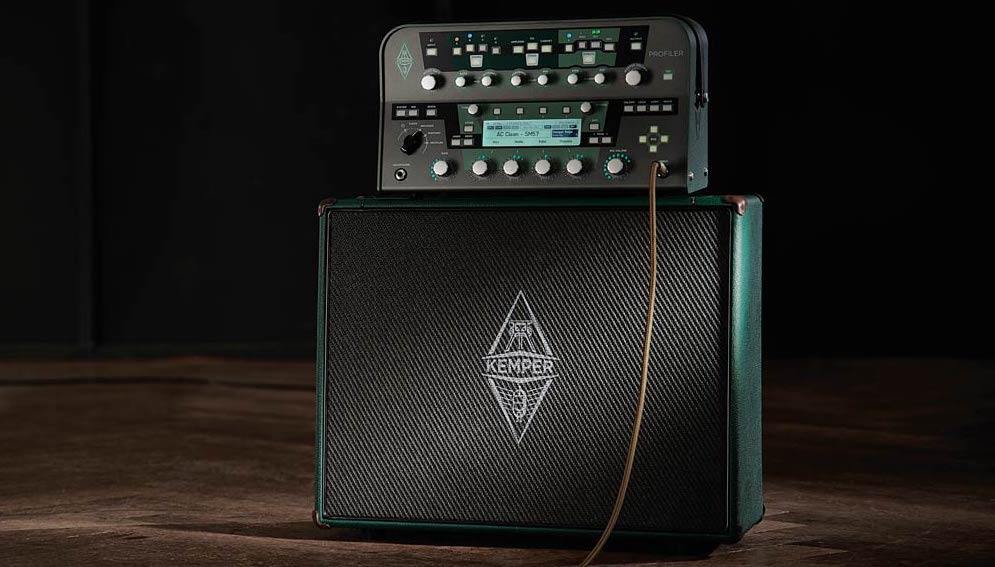Kemper announces Liquid Profiling – offering “the perfect marriage of modeling and profiling”
The huge new update brings modeled gain and EQ controls to profiled tones, creating amp-like responses in captured profiles

Kemper has teased the arrival of a sizeable free software update, featuring its new Liquid Profiles, which add the option of modeled EQ and gain controls to corresponding amp profiles.
The new feature – issued as part of a suite of improvements in a free software update – is designed to tackle a common criticism of the Kemper. Namely, the authenticity of the traditional flat profile sounds once you start to tweak controls.
“It's the perfect marriage of modeling and profiling or profiling modeling” says Christoph Kemper, in a new video with YouTube channel Tone Junkie TV.
“In the past everyone had this little problem to decide between the modeling technique or the profiling technique and I think every everyone wished to have both at the same time, without any drawbacks – and that's what we made.”
As such, Liquid Profiles essentially layer a model of an amp channel’s tone controls over a corresponding profile of the same amp. The source of the sound comes from the profile, but as you change the controls it will model a gain or EQ response based on the amp itself, as opposed to Kemper’s standard controls.
“This is a profile, not a modeling amp,” says Kemper. “We didn’t want to model the distortion or the cabinet – just what you have in your hands. It’s the gain control, it’s bass, middle, treble, presence, the Bright channel. It’s so small and it’s not difficult to be authentic with these small things.”
The initial Profiler update will offer “roughly 40” amp channels (as opposed to complete amps) modeling the appropriate tone stack, presence and gain controls for each, with more to come. We don’t have all the details yet, but they will include the Fender Super Reverb and Deluxe Reverb, Marshall JTM45 and Plexi and Vox AC30.
All the latest guitar news, interviews, lessons, reviews, deals and more, direct to your inbox!
The profiling process remains much the same, but now if you opt to create a Liquid Profile, the Kemper will prompt you to set the control knobs in positions that correspond with those on the amp being captured.
The amp control models are obviously designed to correspond to profiles of the same amps, meaning, for instance, the Vox AC30 Liquid Profile controls are intended to be layered on a Vox AC30 profile.
However, an exciting prospect for tonal tinkerers is the ability to apply the new modeled tone stacks on to other amp profiles – ones they were not intended to emulate.
“You can fool the system,” says Kemper. “We definitely allow that, because it’s fun. [Indeed] you can take any profile and ‘elevate it’ to a Liquid Profile.”
Kemper caveats that it might not be “authentic” in its behavior at that point – particularly, if you don’t recall the initial amp settings at the point the profile was captured – but it’s nice to have the option.
Elsewhere, the new update will now allow you to create profiles via the Rig Manager software. It will also introduce Android support on tablets and phones and bring in USB audio, enabling you to use the Profiler as a high-quality audio interface. Finally, there’s a new marketplace built into Rig Manager – offering a variety of profiles for sale.
You can watch the full Christoph Kemper interview with Tone Junkie TV above. There’s no set date for the update yet, but keep an eye on Kemper for more information.

Matt is Deputy Editor for GuitarWorld.com. Before that he spent 10 years as a freelance music journalist, interviewing artists for the likes of Total Guitar, Guitarist, Guitar World, MusicRadar, NME.com, DJ Mag and Electronic Sound. In 2020, he launched CreativeMoney.co.uk, which aims to share the ideas that make creative lifestyles more sustainable. He plays guitar, but should not be allowed near your delay pedals.
